Tired of Your Stormwater Controls Not Performing to Your Standard?
FocalPoint is a high-performance biofiltration system designed to maximize lot yield, cut costs, and meet green infrastructure goals.
Proven. Scalable. Guaranteed.
Whether you’re managing runoff in dense urban developments or seeking cost-effective bioretention alternatives in rural settings, FocalPoint rises to the challenge. Not only does it minimize upfront and maintenance costs, it also blends beautifully into the landscape, enhancing property value and helping ensure compliance with environmental regulations.
The FocalPoint HPMBS is a combination of a high performance, open cell underdrain, a clog-proof bridging mesh, bridging stone, and a high performance biofiltration media that flows at a rate of over 100” per hour. What this unique combination of parts creates is that FocalPoint’s modular design delivers unmatched flexibility in meeting both water quality and volume control requirements. It integrates effortlessly with Low Impact Development (LID) strategies such as bioswales, bioretention, and stormwater planters.
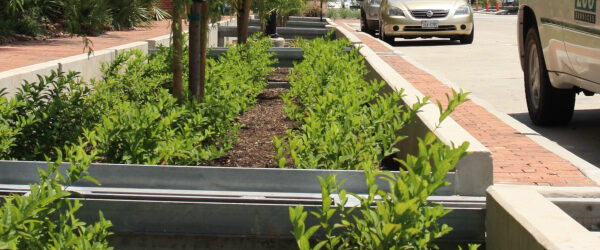
One of the main challenges was ensuring that the biofiltration system did not interfere with the robust root systems of the street trees. Traditional biofiltration planter boxes posed the risk of root intrusion….CONTINUE READING

Springwoods aimed to balance nature, urbanism, and diversity by strongly encouraging the use of green stormwater infrastructure solutions (LID), including bioretention, bioswales, vegetated structural roadway shoulders, permeable pavers and rainwater harvesting….CONTINUE READING

FocalPoint is a high-performance bioretention system that treats large runoff volumes in tight spaces. With infiltration rates of 100″/hr or greater, its engineered soil and modular design drastically reduce footprint, delivering reliable performance in a small package reducing upfront construction costs as well as maintenance costs.
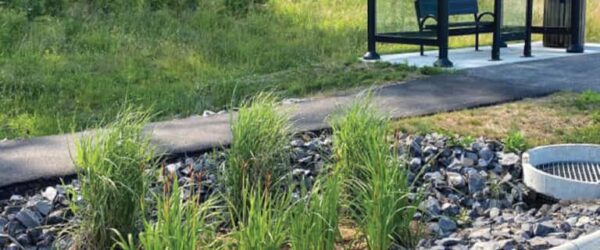
To support The Downs ambitious growth, the project required a stormwater management solution that could meet strict regulatory requirements, preserve space for future development, and protect nearby wetlands…..CONTINUE READING
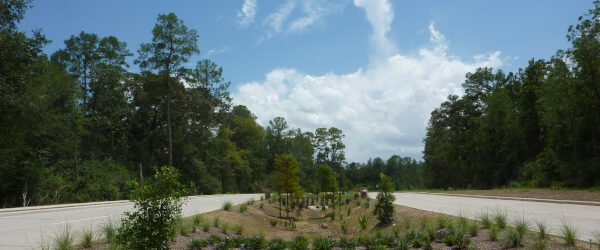
This project is the first roadway project in the Houston area to implement Low Impact Development (LID) techniques and is viewed by Harris County as a stepping stone to implementing LID as its default roadway design approach throughout the County…..CONTINUE READING
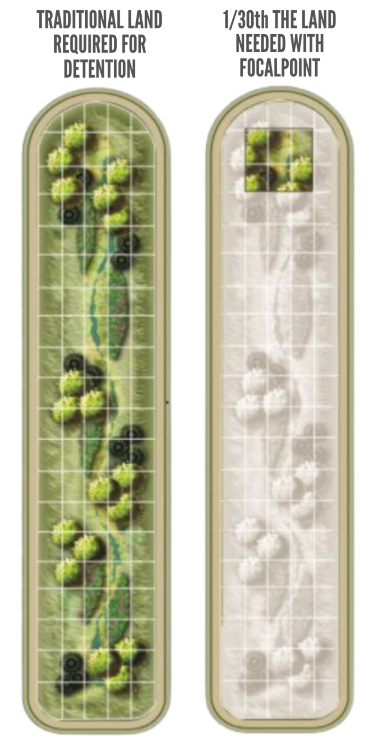
When used in conjunction with complimentary stormwater management solutions, such as bioswales, permeable pavement, and raingardens, FocalPoint creates the ability for developers, architects and engineers to decrease a property’s surface storage volume requirements and increase developable land. Subsequently, with more developed, property owners can increase long-term revenue and/or property value.
Particularly in rural communities, use FocalPoint as part of a distributed detention strategy to extend time of concentration and lower peak flows—reducing required detention volume by 20–50% while meeting water quality goals.
More space. More homes. More value.

The next generation biofiltration strategies allowed the engineer to use a smaller footprint, reduce contractor error during installation, and keep the long-term maintenance costs low. 99% of lots were amenitized by locations on green spaces, while…..CONTINUE READING
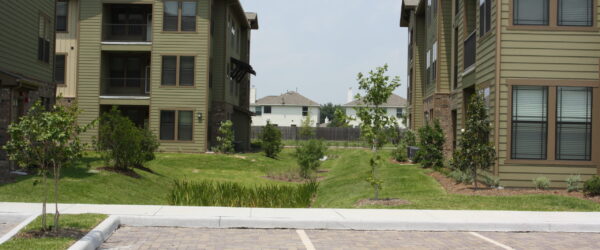
Originally, Academy Development planned for nine apartment buildings to generate the required revenue stream. However, the project stalled when Harris County determined….CONTINUE READING
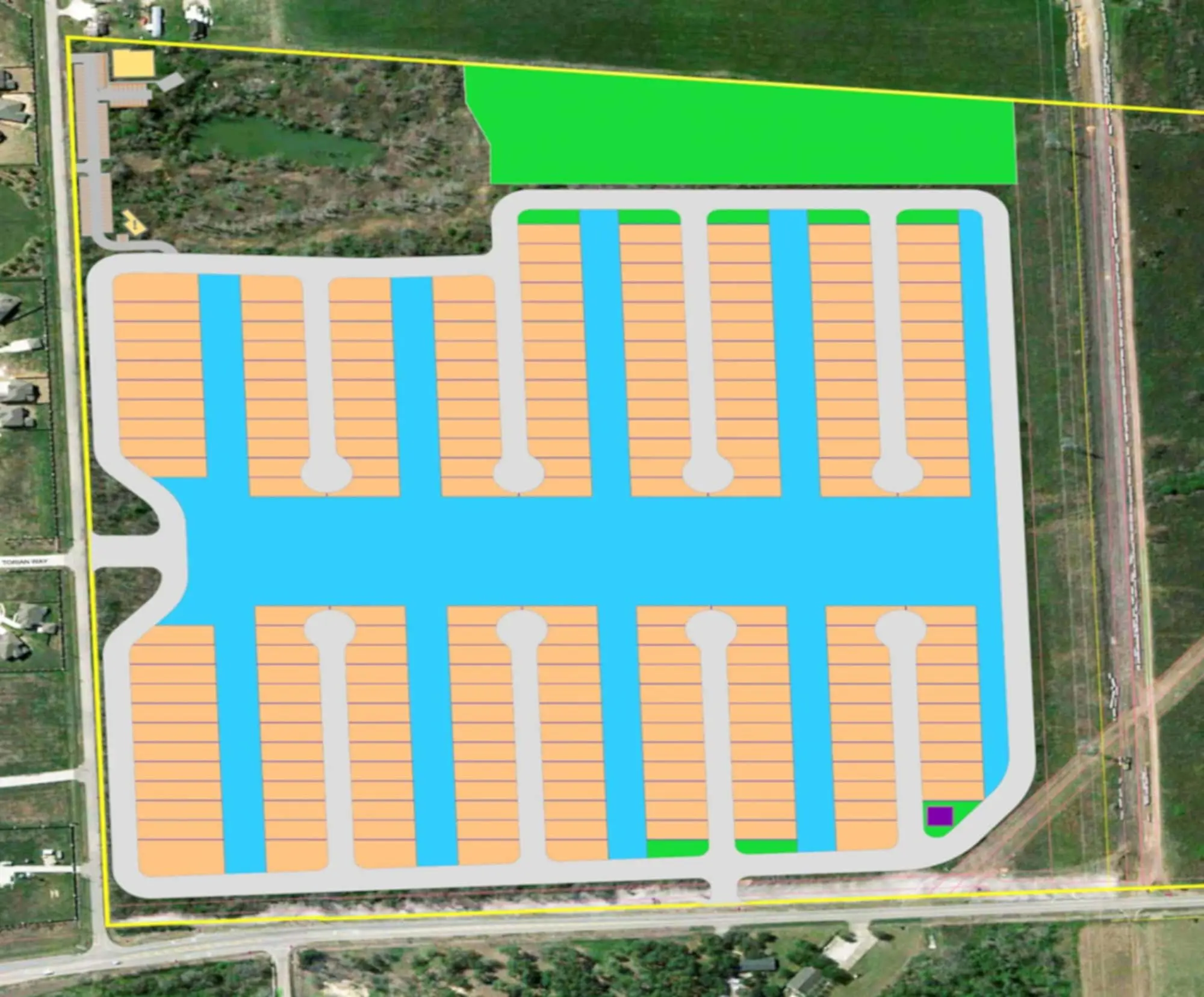
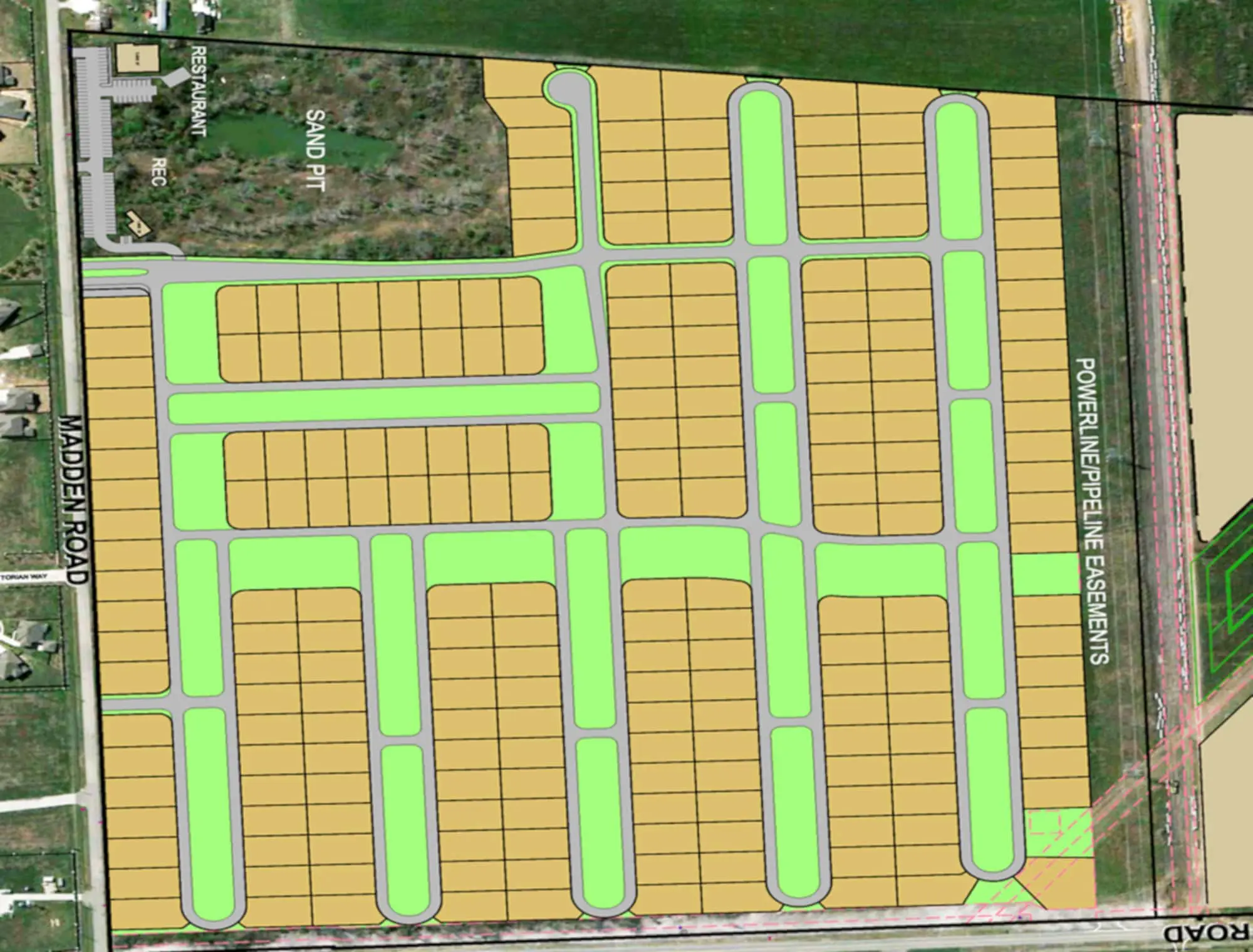
FocalPoint unlocks more usable space by working seamlessly with other stormwater solutions like underground detention and large bioretention cells. In urban developments, pair FocalPoint with modular underground detention to treat runoff before storage, reducing the surface footprint of your stormwater infrastructure and freeing up premium land for development.
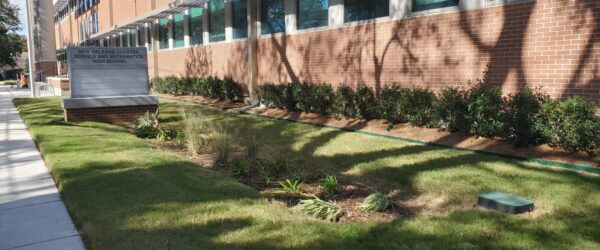
Green Stormwater Infrastructure (GSI) was included in the design of the outdoor space, including permeable concrete pavers and high performance biofiltration with expanded, modular underground detention….CONTINUE READING
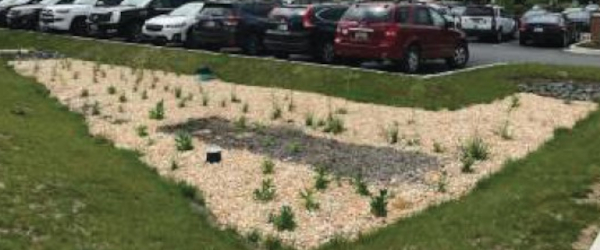
With finite square footage for the lot and the goal of obtaining as many parking spaces as possible, their team needed a strategic, space-saving approach for handling stormwater runoff and meeting stormwater requirements….CONTINUE READING
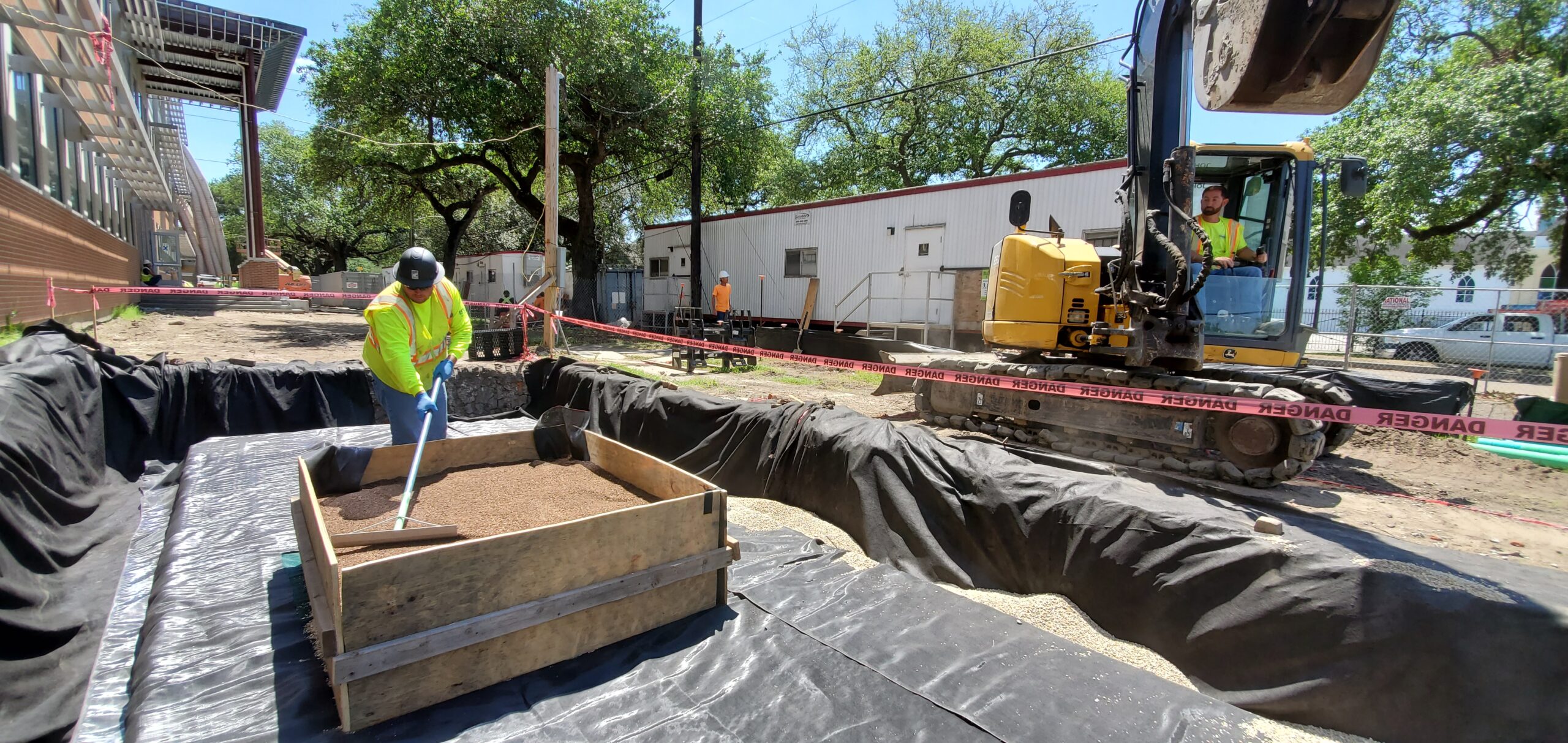
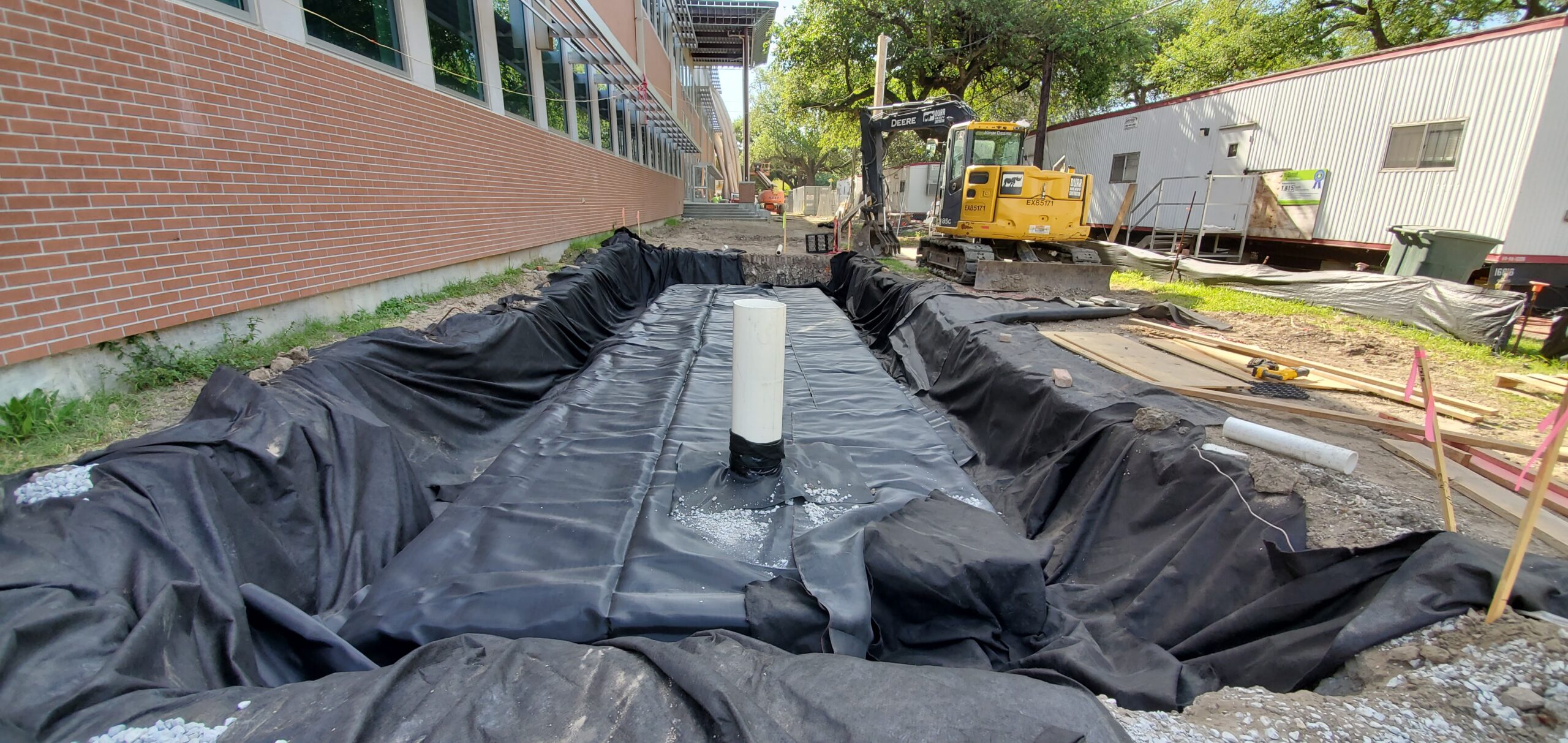
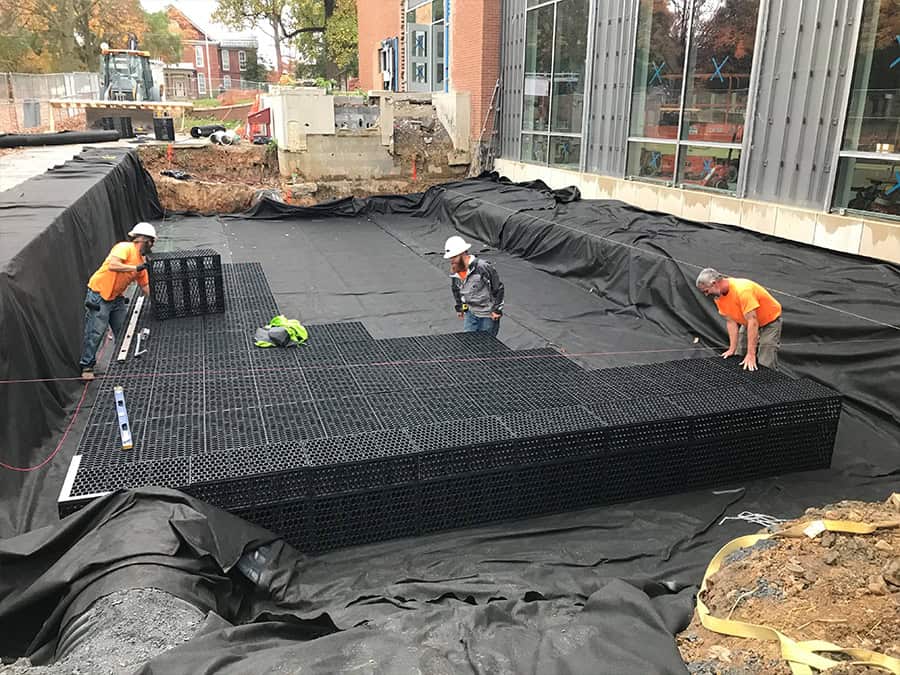
Developed by the US Navy, FocalPointEMR is a Green Stormwater Infrastructure system that eliminates harmful metals, nutrients, TSS, oil and grease from industrial site runoff.
Most industrial facilities are under increasing pressure from regulators and local communities to protect harbors, bays, lakes, and streams by reducing the elevated concentrations of environmental pollutants commonly found within their facility’s stormwater runoff. Facilities are challenged due to intense operations with heavy equipment, multiple pollutant sources, non-porous paved surfaces and buildings, storage areas, and aging drainage and stormwater management technologies. To help solve this challenge, US Navy engineers spent 10 years and tested dozens of optional media options to develop FocalPointEMR, an LID/BMP hybrid system that decreases the concentration of toxic contaminants to meet NPDES permit requirements. In addition, the small footprint and rapid processing times of FocalPointEMR is beneficial for industrial sites where usable space is at a premium.
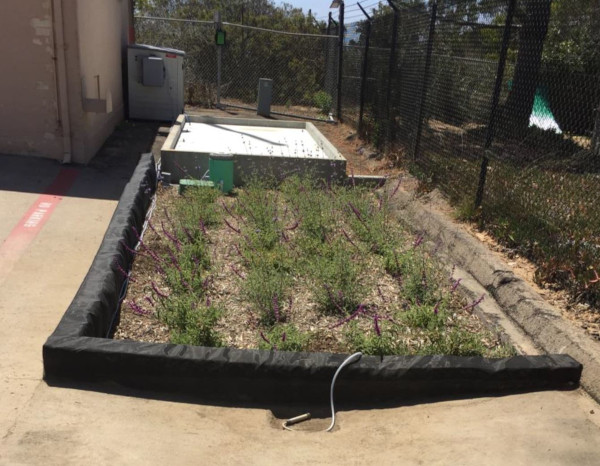
This project demonstrated the Hybrid LID/BMP System’s ability to achieve high metals and suspended solids removal consistently over two rain seasons. The average removal percentage for total and dissolved copper was 97%, total and dissolved zinc was 98%, and TSS was 95%. Over the project life, the system received minimal maintenance and only two contractor maintenance cycles were performed to replace the top three inches of mulch on the LID biofilter.

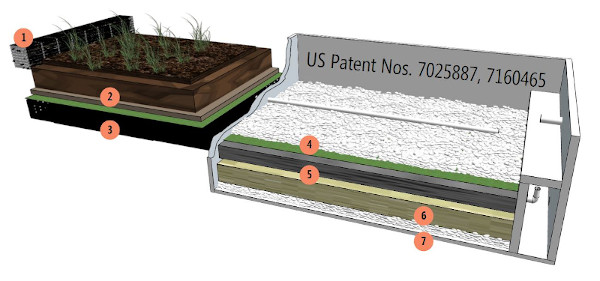
FocalPoint utilizes physical, chemical and biological mechanisms of a soil, plant and microbe complex to achieve pollutant removal rates consistent with traditional bioretention, and the option of increased removal characteristics for specific pollutant targets.
Every FocalPoint HPMBS installation includes free maintenance training in the first year and in some cases free maintenance (varies by region) to ensure optimal performance, with affordable annual maintenance contracts available for long-term reliability.
Blending Sustainability with Urban Design
One of the main challenges was ensuring that the biofiltration system did not interfere with the robust root systems of the street trees. Traditional biofiltration planter boxes posed the risk of root intrusion, which could clog the underdrain and lead to flooding. The solution was to position the biofiltration system outside the tree’s drip zone, minimizing the potential for root interference while maintaining stormwater treatment efficiency.
Increasing Lot Yield by Using Low Impact Development
The next generation biofiltration strategies allowed the engineer to use a smaller footprint, reduce contractor error during installation, and keep the long-term maintenance costs low. 99% of lots were amenitized by locations on green spaces, while the solution also reduced Total Suspended Solids by 85%, Total Phosphorus by 52%, and Total Nitrogen by 60%.
How Birnamwood Drive Sets the Standard for LID Roadway Design in Harris County
Birnamwood Drive is located in northern Harris County, east of Spring, Texas. The existing roadway runs north/south between Fern Hill Drive and intersects Cypresswood Drive. The new section of Birnamwood is approximately 0.68 miles in length and extends from Fern Hill Drive north to Spring Creek Drive. This project is the first roadway project in the Houston area to implement Low Impact Development (LID) techniques and is viewed by Harris County as a stepping stone to implementing LID as its default roadway design approach throughout the County.
Unlocking Development Potential with Smart Stormwater Solutions
Queenston Manor Apartments is a 7.2-acre development adjacent to a master-planned community on Houston’s northwest side. Originally, Academy Development planned for nine apartment buildings to generate the required revenue stream. However, the project stalled when Harris County determined that the previously designated offsite detention volume was no longer available.
To overcome this challenge, EHRA, Inc. implemented a Low Impact Development (LID) approach featuring the FocalPoint High-Performance Modular Biofiltration System (HPMBS). This innovative design reduced the need for traditional detention ponds, allowing the project to proceed while maintaining sufficient drainage and maximizing buildable land.
Transforming Parking Lots into Green Infrastructure
Aguirre & Fields, LP, headquartered in Sugar Land, TX, specializes in infrastructure planning and engineering across Texas. Their expertise spans various civil engineering disciplines, including land development, site design, roadways, and bridges. In an effort to explore new market opportunities in Low Impact Development (LID) and Green Infrastructure, Aguirre & Fields decided to retrofit their own parking lot as a demonstration project. This retrofit serves as a real-world example to showcase the benefits of LID, such as enhanced aesthetic appeal, increased time of concentration, and decreased peak flows. Additionally, the installation of an R-Tank Reuse System has enabled them to reduce annual potable water use by over 50%.
How Kendall Library Transformed Stormwater Management
The newly constructed three-story Belle Sherman Kendall Library at 609 N. Eldridge serves as more than just a library—it functions as a full-fledged community center, complete with classrooms, after-school programs, and a half-gym. Designed to achieve LEED® Silver Certification, the project integrated sustainable features, including an underground water harvesting system fed by bioswales to support landscape irrigation. An engineered soil matrix was placed on the entire surface area of each swale to filter hydrocarbons and TSS found in storm water runoff prior to being stored in a 30,000 gallon rainwater harvesting system which are directly infiltrated without the need for inlets, and located beneath the swales where the stored water awaits reuse for landscape irrigation.
Smart Drainage Solutions for a Thriving Community
Kolbe Farms Townhomes, an environmentally conscious development by InTown Homes, was inspired by the 2010 Houston Land/Water Sustainability Forum’s Low Impact Development (LID) Design Competition. The competition showcased how LID techniques could reduce flash flooding, improve water quality, and provide economic benefits. Frank Liu, President of InTown Homes, was so impressed that he hired EHRA, Inc., the winner of the residential property design challenge, to incorporate LID principles into his townhome development.
FocalPoint systems are typically sized as a percentage of the impervious drainage area that contributes runoff to the system. The specific percentage varies by state, but 175 square feet per impervious acre is usually a good estimate. Some states use routing methodology (such as TR-55) to design systems. Contact us if you would like help with these designs.
Traditional bioretention systems filter runoff at a much slower rate than FocalPoint, which means they need far more square footage to treat the same amount of runoff. These traditional systems typically filter runoff at 1-4 inches/hour/square foot, while FocalPoint filters runoff at over 100 inches/hour/square foot.
Using a mini excavator, preparing a 4’ x 5’ excavation is manageable, so we typically use 20 square feet as the minimum size. We have built systems as small as 12 square feet (3’ x 4’), but there is significantly more hand-work involved to get the dimensions precise.
There is no maximum size, but be mindful of managing energy dissipation and flow velocities entering the FocalPoint.
FocalPoint systems should be modelled to flow at 100 inches per hour.
If the runoff treated by FocalPoint needs to be infiltrated after treatment, it is possible to do that either directly beneath the FocalPoint, or in a separate infiltration bed/basin (assuming there is enough elevation/depth above the SHWT). It is frequently possible to infiltrate directly beneath the FocalPoint by increasing the height of the high-performance underdrain, expanding the underdrain outside of the FocalPoint media footprint, or both.
FocalPoint is a sustainable, living system that should not need to be deconstructed, rebuilt, or replaced. However, in rare instances where regular maintenance does not restore water flow through the system, replacing the top 3” – 6” of the media bed will typically restore the system to its original capabilities.Contact us for guidance on confirming your restoration plan.
The standard depth for FocalPoint is 42.5” from flowline to the invert of the outlet. This includes 6” ponding depth, 3” of mulch, 18” of media, 6” of bridging stone, and the 9.5” underdrain. It is possible to modify the profile to reduce the overall depth when necessary.
There are two options to consider when dealing with depth limitations. It is possible to either reduce the overall depth of the system or to add an impermeable geomembrane envelope to the system. Contact us to explore the options.
Typical ponding depth in a FocalPoint system is 6”, and many systems have been built with 12” ponding depths over the FocalPoint. However, it is possible to have much deeper ponding areas with FocalPoint. Successful installations have been constructed with ponding depths as great as 60”. Contact us, we can help with non-standard applications.
The grading around a FocalPoint should be no different than traditional bioretention systems. This includes side slopes no greater than 3:1, and the inclusion of energy dissipation at any areas of concentrated flow. For steeper grades in tight spaces, there are several options that can be explored, such as the use of Turf Reinforcement Mats, decorative stone, short curbs, and a variety of other options. Contact us about options that will work best for your site.
Most systems don’t require a border. However, in some cases, borders can be useful for energy dissipation as well as delineation of the system. There are multiple ways to handle both of these objectives, contact us for help identify the best solution for your project
In most states and localities, upstream pretreatment is not required. However, that doesn’t mean it’s not a good idea! Good pre-treatment facilitates future maintenance and will pay for itself quickly.
Yes! Because FocalPoint uses an open, generic, performance-based specification, it can easily be used on all types of projects where proprietary devices are prohibited.
The FocalPoint system has been approved and installed in more than 25 states and the District of Columbia. While not all states maintain an “Approved Products” list, FocalPoint has been approved as a stand-alone treatment practice for new construction, retrofit and redevelopment projects in CT, DE, MA, MD, ME, NH, NY, PA, VA and many others.
Costs vary based on the size and location of the job. Experience has shown that FocalPoint costs are similar to traditional bioretention systems that treat the same volume of runoff, with the added benefit of a drastically smaller footprint and the resulting reduced maintenance costs of the smaller footprint.
Cities, Counties, Regional and State permitting authorities across the country, in at least 25 states and the District of Columbia, have permitted FocalPoint installations, including states that don’t have an ‘approved products’ lists. States which do have an innovative technology/products list, and in which FocalPoint has been accepted as a stand-alone water quality BMP or primary treatment practice include CT, DE, FL, MA, MD, ME, NH, NY, OH, PA, VA, VT and WV.
The FocalPoint system has been approved and installed in more than 25 states and the District of Columbia. While not all states maintain an “Approved Products” list, FocalPoint has been approved as a stand-alone treatment practice for new construction, retrofit and redevelopment projects in CT, DE, MA, MD, ME, NH, NY, PA, VA and many others. Contact us for permitting and approval assistance.
The media components are listed in the specification and are not proprietary. The only secret of FocalPoint is in consistently building systems that exceed the performance-based specification used in the design.
All components, including mulch, media, and bridging stone, are typically shipped in supersacks to avoid contamination from on-site soils. The structural underdrain is typically shipped on pallets, along with any other components that may be necessary for your project.
FocalPoint is sold exclusively as a complete system. The components have been tested together to guarantee compatibility, prevent problems, and ensure the installed system meets the performance specification.
Yes! Plants are a critical component, and they help ensure the long-term performance of the system. Plant roots help create pathways for water to flow, and they pull nutrients from the soils, recharging the media and allowing it to continue to treat runoff.
All of the mulch supplied with FocalPoint Systems has been screened through a trommel to remove the fine particles. These fine particles can plug up bioretention systems and negatively impact the flow of runoff through the system. Outside mulch sources and bagged mulch from home improvement stores should not be used in a FocalPoint system.
When installed along the curbline, traditional curb inlets are ideal for the bypass structure. When drop-inlets are used, flat grates should be avoided and domed or slanted grates should be used. These grates shed mulch and debris as ponded water recedes to prevent clogging of the overflow.
In some cases it is possible, even necessary, to reduce the thickness of the bridging stone layer. Contact us to explore this possibility.
Incompatibility between filtration medias and bridging materials is a common reason for failure of traditional bioretention systems. Construction EcoServices has done modelling, lab testing, and field testing to ensure the bridging stone supplied with the FocalPoint system is an ideal match to properly bridge the media.
When used, Gabions typically sit within the FocalPoint footprint just below the top of the media. The gabion remains completely permeable, so flow through the system, including the media below the gabion, is unaffected.
No, the gabion border is not required and should only be included when needed for delineation or energy dissipation. Delineation of the FocalPoint can be useful when the system is installed in a larger landscaped area that looks uniform once mulch is applied, but it is not necessary if turf or other materials are used around the system that make the maintenance area obvious. Energy dissipation can be a useful function of the gabion, but other systems such as the Rain Guardian or PreTx are better suited for this purpose.
Perforated pipes usually have 2-5% of their surface area open for water to move into the pipe. This limitation restricts flow and prevents the FocalPoint system from operating at its maximum efficiency. The high-performance underdrain that comes with FocalPoint has a surface that is 90% open area, allowing for much greater flow through the system.
The underdrain should only receive runoff that has been treated by the FocalPoint system, so no maintenance of the underdrain should be necessary. Overflow structures should be located on the outlet side of the system to avoid introducing untreated water directly into the underdrain. If access to the underdrain for maintenance is critical to your project, contact us for options to include this capability.
The underdrain supplied with the FocalPoint must be used to ensure the system performs as specified, and other options must be avoided. Construction EcoServices provides multiple underdrain depth options to ensure there is a good fit for every type of project. Contact us for more information about the underdrain options available to you.
No geotextiles are used in the operational cross-section of the FocalPoint, as these fabrics have a history of clogging in bioretention applications. FocalPoint does incorporate different geosynthetic materials to form the outer envelope of the system, and there are specific recommendations to mitigate clogging when infiltration of runoff from the system underdrain into the surrounding soils is desired.
There are three different materials that can be used to form FocalPoint’s outer envelope based on the design goal of the system.
Geotextiles are used to form the outer envelope of the system, but not within the operation cross-section. A microgrid separates the bridging stone from the structural underdrain, and its larger openings are not susceptible to clogging like a geotextile would be.
Many excavations are oversized or done to rough measurements, but FocalPoint excavations must be done to precise measurements with no additional area excavated. This is critical since components are supplied in the exact quantities necessary to fill the excavation, with limited waste factors included.
There is no special certification needed to install a FocalPoint system. All of the steps are fairly simple and similar to construction of a traditional bioretention system. However, working in smaller spaces with precise requirements can be tricky, and Construction EcoServices can provide recommendations for installers that have successfully built many FocalPoint systems if desired.
Construction EcoServices will conduct a pre-construction meeting at no additional cost and will be on-site as much as possible to ensure a successful installation.
FocalPoint uses a performance-based specification that requires the installed system to perform at the specified standard. After installation a hydraulic conductivity test is performed at no additional charge to ensure the system is functioning properly. This testing is typically done 30-90 days after installation.
Maintenance requirements for FocalPoint are similar to those for traditional bioretention. Mulch should be removed and replaced every 6-12 months, and plants should be trimmed back to encourage growth (and the consumption of nutrients). Read the Operations & Maintenance Guide for more information.
Access the free FocalPoint Design Worksheets by submitting the form. Design Worksheets have been provided by Ferguson Waterworks, a value-added reseller of Convergent Water Technologies. Worksheets are provided for the following states:
If your state is not listed here, please contact us for more information on how to design a FocalPoint in your state.

If you and your team would like to learn more about the FocalPoint Biofiltration Systems or any of the wide variety of products and services we offer, schedule a LUNCH & LEARN today.